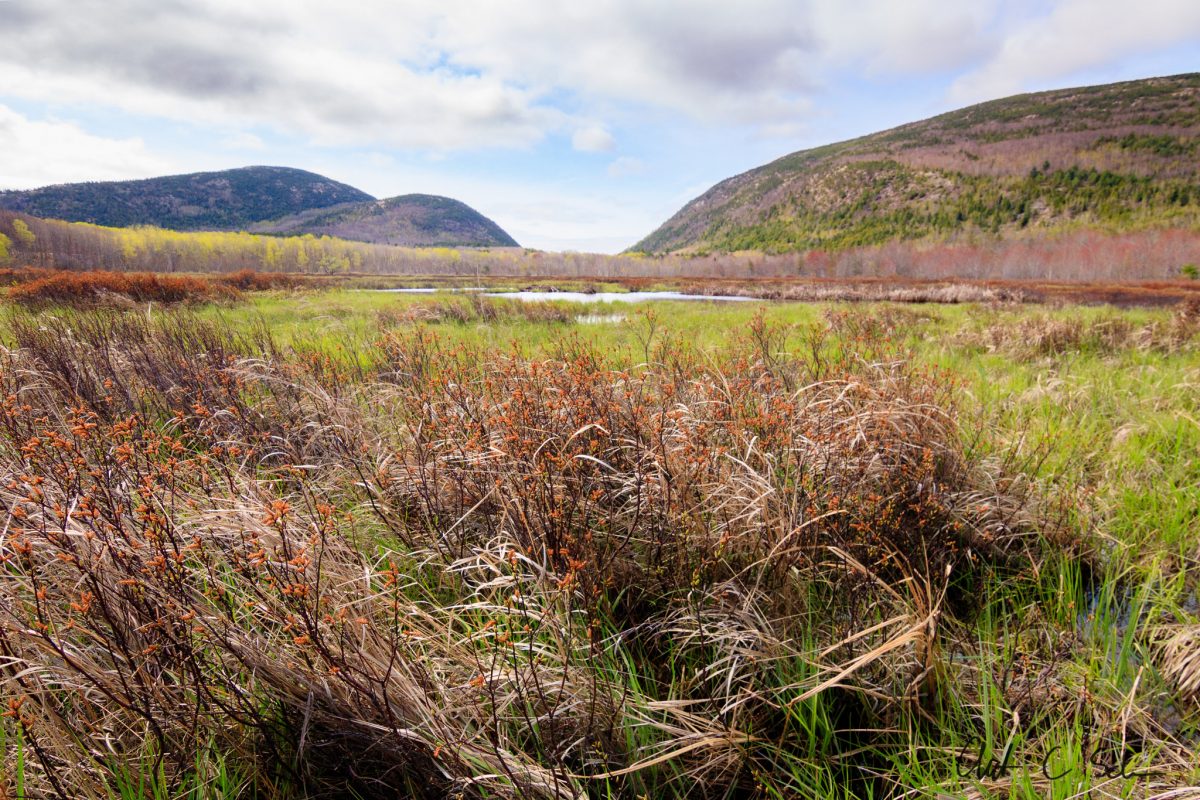The sun was setting and my friend Kali and I walked into Acadia National Park in search of a swamp monster.
You think I’m joking? This creature—recently seen at our very location—features the three key swamp monster identifiers:
- a love for wet, buggy, decomposing lowlands. It’s found in these wetlands almost always alone. Who knows why? That unexplained solidarity must be monstrous
- an impeccable ability to conceal itself at all times
- and an unusual cry that strikes fear into any living being
The thrill of the chase made our hearts beat quickly with nervous fear and expectation. Although we stopped frequently, scanning and listening, to try to catch a sign of the swamp monster, we were unsuccessful. That is, until we trod on the famous Hemlock Trail, a classic path fenced in by crooked white birch trees and surrounded by tiny flowing streams and watery meadows.
The thrill of the chase made our hearts beat quickly with nervous fear and expectation.
Suddenly, we stopped, craning our heads toward the right—but the sound was just a few deer, who hopped away swiftly, white tails waving like flags behind them. With hope of monster discovery vanishing, we finally resigned to failure in our search, until Kali stopped dead in her tracks—she heard it.
Glug-glup glug-glup glug-glup
Faint, but distinct and audibly near. We made for the edge of the path, peering through the gaps in the birch rows. Maybe the monster was telling us to keep away.
We waited for it to repeat the warning cry.

A minute passed. We squinted toward the thick shrubs of the boggy meadow. Did we imagine it?
Glug-glup glug-glup glug-glup
We found our monster!
Unfortunately, our footwear was unfit for either swamp searching or tree climbing (I tried both). And already late for appointments that night, with the darkness looming closer, we went away with only the monster’s song to haunt our dreams.
However, the next morning I came back prepared.

The “monster” we heard the night previous was in fact an American Bittern. These herons do live alone in wetlands (the only bird in their family that doesn’t nest in large colonies), but their song isn’t exactly harrowing, nor is it an evil warning cry—it serves the same evolutionary purpose that all vernal displays serve —it’s all about mating.

The next morning, as I slowly trudged into the soupy mud of Great Meadow in hip waders, the sounds of spring only grew louder as I moved further toward the swamp’s center.
The songs of sparrows and warblers flooded the air accompanied by the dulcet croaks of wood frogs. The emerging scarlet leaves of red maples and deep greens of alders accented the glowing leatherleaf bells and the watery blues and bright grassy greens of the wetland.

Despite wetlands’ bad reputation, as I gently moved deeper into the swamp monster’s lair, I again discovered why bogs and marshes hold so much charm.
Maligned for much of American history — settlers and politicians alike favored land that could “do something” like grow crops or support homes — wetlands were often exploited or simply overlooked.
Besides, people saw swamps as the place of monsters, disease, and other evil, devilish things. For a long time, swamps represented an untamed and savage place that needed to be improved and cultivated.

After an hour wading through the thigh-deep water and carefully stepping over flattened cattails, I finally heard the bittern sing out again.
Glug-gulp glug-gulp glug-gulp glug-gulp

I spent hours that morning stalking my bittern. Eventually, I came into an opening within view of Acadia National Park’s loop road. Some people stopped their cars, got out, and peered into the picturesque meadow.
A few took out binoculars and cameras and pointed them my direction. As those people watched from the roadway, did they look at me, or the bittern that I couldn’t see, or just the scenery? Did it matter? After that morning, I felt as much part of the swamp as the swamp monster.
Eventually, I came to Cromwell Brook, which bisects the meadow, and at this point I could go no further in the singing bittern’s direction. As I stood at the edge of the gently flowing stream for some time, disappointed at not coming closer, I again heard the bittern repeating its eerie gulping just from the other side of the brook.
After that morning, I felt as much part of the swamp as the swamp monster.
But I never got a glimpse of it that day. And maybe that’s okay.
This video of an American Bittern signing comes courtesy of the Cornell Lab of Ornithology’s site All About Birds.
Thanks for reading this field note! You may notice that the style of my website has changed. These changes showcase top photographs while giving adequate space to these field notes that tell the stories behind the photos.
For more bird photos (and maybe a few “swamp monsters” of their own), check out the wildlife section of my gallery.
